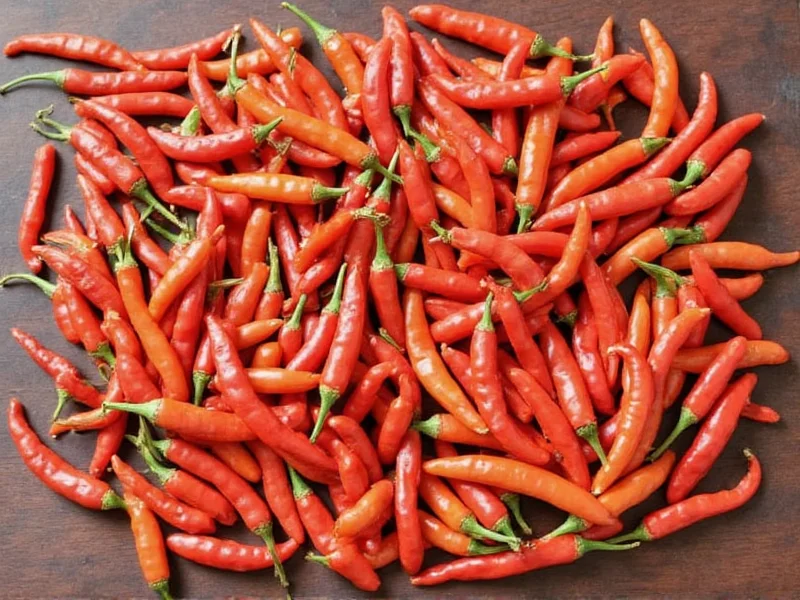When your recipe calls for Fresno chiles but you're staring at an empty produce section, knowing the right substitute can save your cooking project. These vibrant red or green peppers, ranging from 2,500-10,000 Scoville heat units, offer a bright, slightly fruity flavor that's essential in many Mexican and Southwestern dishes. Understanding what makes Fresno chiles unique helps you select the perfect replacement when they're unavailable.
Understanding Fresno Chile Characteristics
Fresno chiles (Capsicum annuum) resemble smaller jalapeños but with a more tapered shape. They mature from green to bright red, developing increasing sweetness as they ripen. Their medium heat level sits between jalapeños and serranos, making them versatile for salsas, sauces, and stuffed pepper dishes. The thin walls provide excellent texture in fresh applications, while their flavor profile combines grassy notes with subtle fruitiness.
Top Fresno Chile Substitutes Compared
| Pepper Variety | Heat Level (SHU) | Flavor Profile | Substitution Ratio | Best For |
|---|---|---|---|---|
| Jalapeño | 2,500-8,000 | Grassy, slightly vegetal | 1:1 (use 1-2 fewer for milder) | Salsas, nacho cheese, pickled applications |
| Serrano | 10,000-23,000 | Sharp, bright, more intense | 1 Fresno = ½-1 Serrano | Hot sauces, spicy salsas, cooked dishes |
| Poblano | 1,000-2,000 | Earthy, mild, slightly sweet | 1 Fresno = 1-2 Poblanos | Stuffed peppers, rajas, mild sauces |
| Thai Bird's Eye | 50,000-100,000 | Floral, intensely hot | 1 Fresno = ¼-½ Thai chili | Asian-inspired fusion dishes |
| Canned Green Chiles | 500-2,500 | Mild, slightly smoky | 2 tbsp = 1 fresh Fresno | Enchilada sauces, casseroles, soups |
Choosing the Right Substitute for Your Recipe
Your best Fresno chile replacement depends on both the dish you're preparing and your heat tolerance. For fresh applications like pico de gallo or guacamole, jalapeños provide the closest texture and moderate heat. Remove seeds and membranes from jalapeños to match Fresno's medium heat profile more closely. When making cooked sauces or stews, serranos offer superior flavor depth despite their higher heat—simmering reduces their intensity while preserving flavor complexity.
For mild applications like stuffed peppers or cream-based sauces, poblano peppers create excellent texture with significantly less heat. Roast and peel poblanos first to enhance their natural sweetness. When substituting canned options, fire-roasted diced green chiles work well in soups and casseroles, while pickled jalapeños provide the tangy brightness of fresh Fresnos in cold applications.
Advanced Substitution Techniques
Professional chefs often blend peppers to recreate Fresno chile characteristics. Combine equal parts jalapeño and poblano for balanced heat and flavor in salsas. For recipes requiring red Fresnos, add a pinch of smoked paprika to green pepper substitutes to mimic the sweeter, riper flavor profile. When using dried alternatives like guajillo peppers, rehydrate them in hot water for 20 minutes before incorporating into sauces.
Remember that cooking method affects heat perception. Raw substitutes will taste hotter than when cooked, as capsaicin breaks down with heat. For raw applications, reduce substitute quantities by 25%. In long-simmered dishes, you may need to increase substitute amounts by 15-20% to maintain desired heat levels.
Avoiding Common Substitution Mistakes
Many home cooks make critical errors when replacing Fresno chiles. Never substitute bell peppers for heat-containing recipes—this creates flavor imbalance without the characteristic chile warmth. Avoid using cayenne powder as a direct substitute, as its concentrated heat and different flavor profile will overwhelm dishes. When substituting hotter peppers like serranos, always start with half the recommended amount and adjust after tasting.
Consider your audience's heat tolerance when selecting substitutes. For family-friendly meals, opt for poblanos or Anaheim peppers. For authentic heat in Mexican cuisine, serranos provide the most traditional flavor profile despite their increased spiciness. Always remove seeds and white membranes from substitute peppers to better match Fresno's moderate heat level.
Storage Tips for Substitute Peppers
Extend the shelf life of your substitute peppers by storing them properly. Keep fresh jalapeños and serranos in perforated plastic bags in the vegetable crisper drawer—they'll stay crisp for 2-3 weeks. For longer storage, slice and freeze peppers on a baking sheet before transferring to freezer bags. Canned green chiles maintain quality for 18 months unopened, but use within 5-7 days after opening. Roasted poblanos freeze exceptionally well for future use in sauces and fillings.











 浙公网安备
33010002000092号
浙公网安备
33010002000092号 浙B2-20120091-4
浙B2-20120091-4